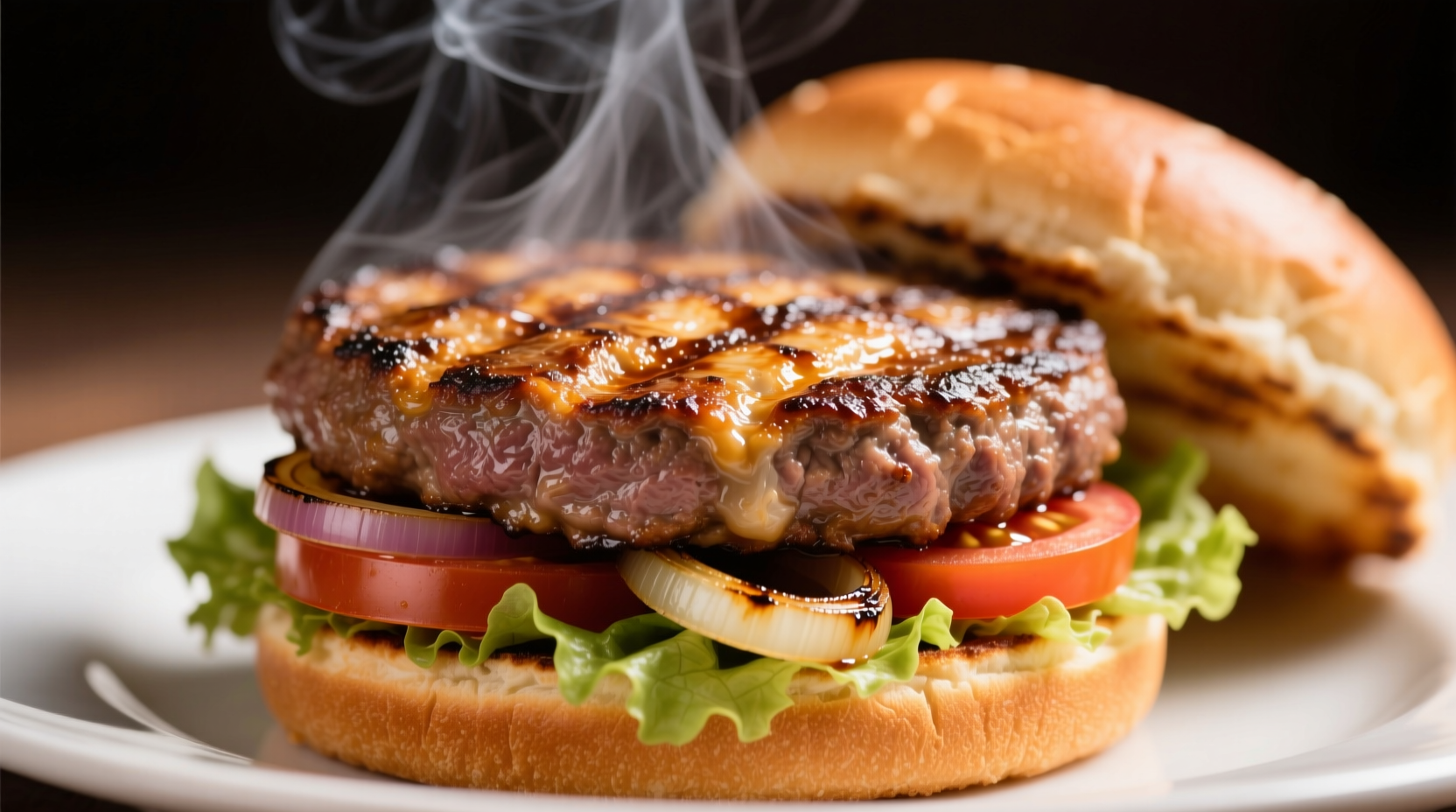For a standard ¾-inch thick beef patty, cook burgers for 3-4 minutes per side for medium-rare (130-135°F), 4-5 minutes per side for medium (140-145°F), or 5-6 minutes per side for well-done (160°F+). Always verify doneness with a meat thermometer as cooking times vary based on patty thickness, cooking method, and heat intensity.
Ever wonder why your burgers turn out dry or undercooked despite following timing guidelines? You're not alone. Millions of home cooks struggle with burger timing because time alone doesn't determine doneness. Temperature does. This guide cuts through the confusion with science-backed cooking methods that guarantee perfect burgers every time—no guesswork required.
Why Time Isn't the Best Doneness Indicator
While "how long to cook burger" is a common search, professional chefs know timing is unreliable. Factors like patty thickness, grill temperature fluctuations, and even ambient weather dramatically affect cooking duration. The USDA Food Safety and Inspection Service confirms that internal temperature is the only reliable doneness indicator for ground beef.
| Doneness Level | Internal Temperature | Visual Indicators | Recommended Cooking Time* |
|---|---|---|---|
| Rare | 120-125°F (49-52°C) | Very red center, soft texture | 2-3 min/side |
| Medium-rare | 130-135°F (54-57°C) | Warm red center, slightly firm | 3-4 min/side |
| Medium | 140-145°F (60-63°C) | Pink center, springy texture | 4-5 min/side |
| Medium-well | 150-155°F (66-68°C) | Slight pink center, firm | 5-6 min/side |
| Well-done | 160°F+ (71°C+) | No pink, very firm | 6-7 min/side |
*For ¾-inch thick patties at 375-400°F heat. Always verify with thermometer.
Cooking Method Comparison Guide
Your cooking surface dramatically impacts timing. Here's how to adjust based on your method:
Grill Mastery
Preheat grill to medium-high (375-400°F). Create two zones: direct heat for searing, indirect for finishing. Sear patties 2 minutes per side over direct heat, then move to indirect heat until reaching target temperature. Never press burgers—this squeezes out flavorful juices. According to the USDA's Food Safety Education, ground beef must reach 160°F for safety, though many chefs pull burgers at 150-155°F and let carryover cooking finish the process.
Stovetop Success
Use a cast-iron skillet preheated over medium-high heat. Add patties and cook undisturbed for initial sear. Flip once bubbles form on surface (about 3 minutes). For cheeseburgers, add cheese during last minute of cooking and cover to melt. The American Meat Science Association notes that thinner patties (½ inch) cook 30-40% faster than standard thickness.
Oven Technique
For hands-off cooking, bake at 400°F on a wire rack over a baking sheet. Cook 12-15 minutes, flipping halfway. Ideal for multiple burgers but lacks grill marks. University of Minnesota Extension research shows oven-cooked burgers retain 15% more moisture than pan-fried when cooked to the same internal temperature.

Food Safety Essentials You Can't Ignore
Ground beef requires special care because bacteria from the surface gets distributed throughout during grinding. The FDA Food Code specifies 157°F as the minimum safe temperature, but recommends 160°F for ground beef to ensure pathogen destruction. The USDA's Food Safety and Inspection Service states: "Ground beef should be cooked to a safe minimum internal temperature of 160 °F as measured with a food thermometer." Source: USDA FSIS
Key safety practices:
- Always use a calibrated instant-read thermometer
- Clean thermometer probe between readings
- Refrigerate raw patties below 40°F
- Never partially cook burgers to finish later
Troubleshooting Common Burger Problems
Dry burgers? Overcooking is the #1 culprit. Pull burgers 5°F below target temperature—they'll continue cooking off-heat. For 80/20 ground beef, cooking beyond 150°F extracts excessive fat.
Uneven cooking? Create a slight dimple in the center of patties before cooking. This prevents bulging and promotes even thickness as meat contracts.
Sticking to the grill? Ensure cooking surface is properly preheated and oiled. Wait for natural release—forcing early causes tearing.
Pro Tips for Perfect Burgers Every Time
Temperature matters before cooking: Let refrigerated patties sit at room temperature 20-30 minutes before cooking. Cold meat cooks unevenly.
Resting is non-negotiable: Tent cooked burgers with foil and rest 5 minutes. This allows juices to redistribute—skipping this step loses up to 30% of moisture.
Thickness consistency: Use a kitchen scale for uniform patties (typically 5-6 oz). Inconsistent thickness causes some burgers to overcook while others remain raw.
Frequently Asked Questions
Remember: Perfect burgers balance science and technique. While timing provides a starting point, your thermometer is the ultimate guide. Master these fundamentals and you'll never serve an undercooked or dry burger again. For more precision cooking techniques, explore our temperature-controlled cooking guide.











 浙公网安备
33010002000092号
浙公网安备
33010002000092号 浙B2-20120091-4
浙B2-20120091-4